Graphos – Nibs – Rapidograph
Ink drawing tools before the advent of CAD
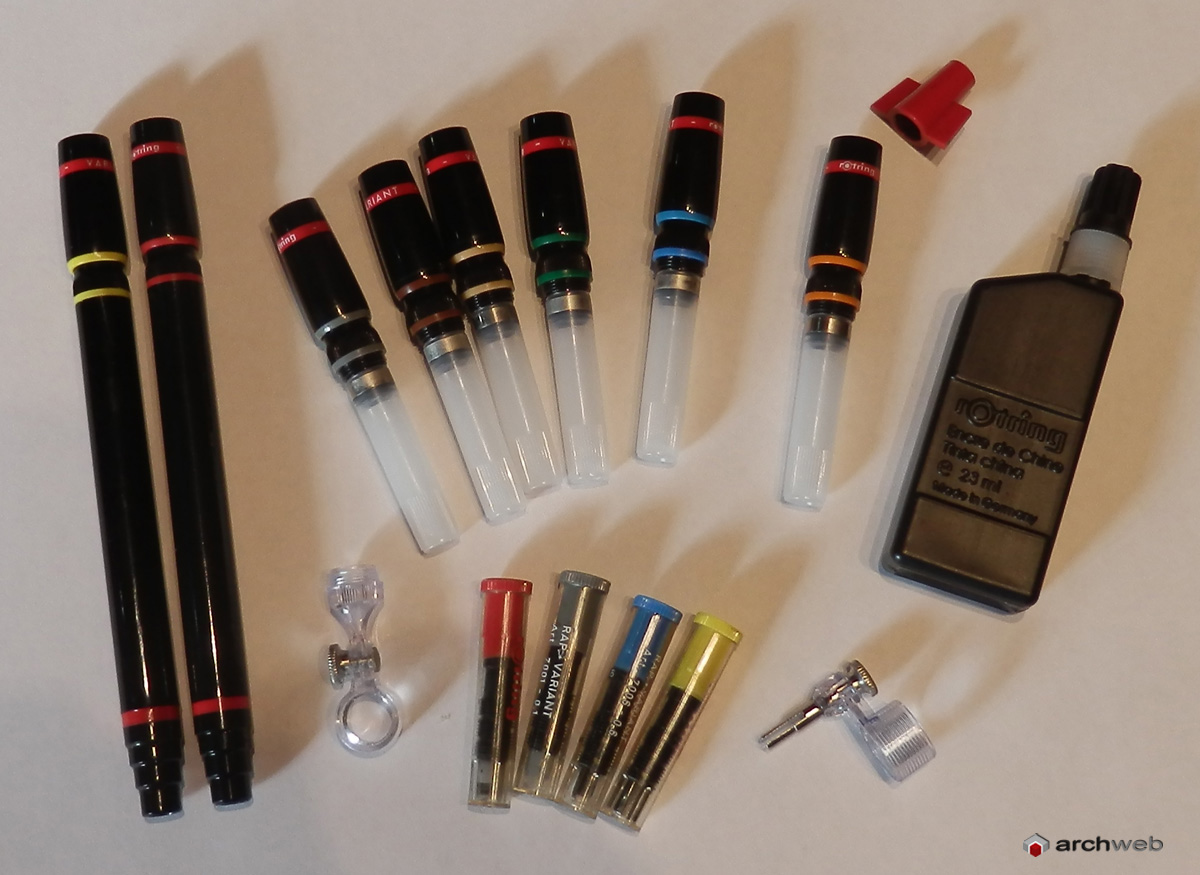
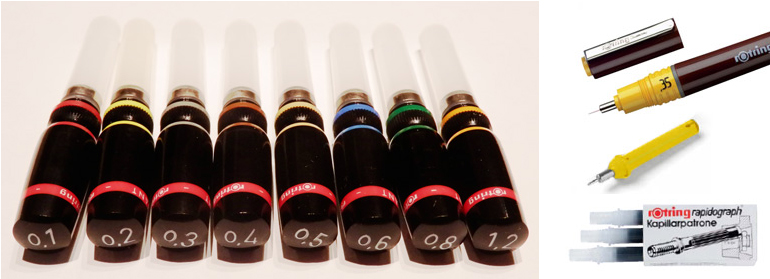
Rapidograph, also known as nibs or improperly graphos, were an important tool for drawing ink before the introduction of CAD and therefore of plotters. In some sectors they still are but in the field of technical drawing they were the main tool for the representation of the project on paper and on glossy paper. Each rapidograph had its thickness from 0.1 to 1.2 covering all the graphic needs of the project. The use of color is very important to quickly distinguish between the various thicknesses.
The yellow (0.2) nibs for the projection lines and beige (0.5) for the masonry or all the cross-sectional lines were the most used for the 1,100 scale drawings.
The yellow nib being among the thinnest was particularly delicate, in case of a fall the steel tip bent and the nib was practically compressed. 50% of the time it was possible to straighten the tip and it continued to work, otherwise 12 thousand lire were lost.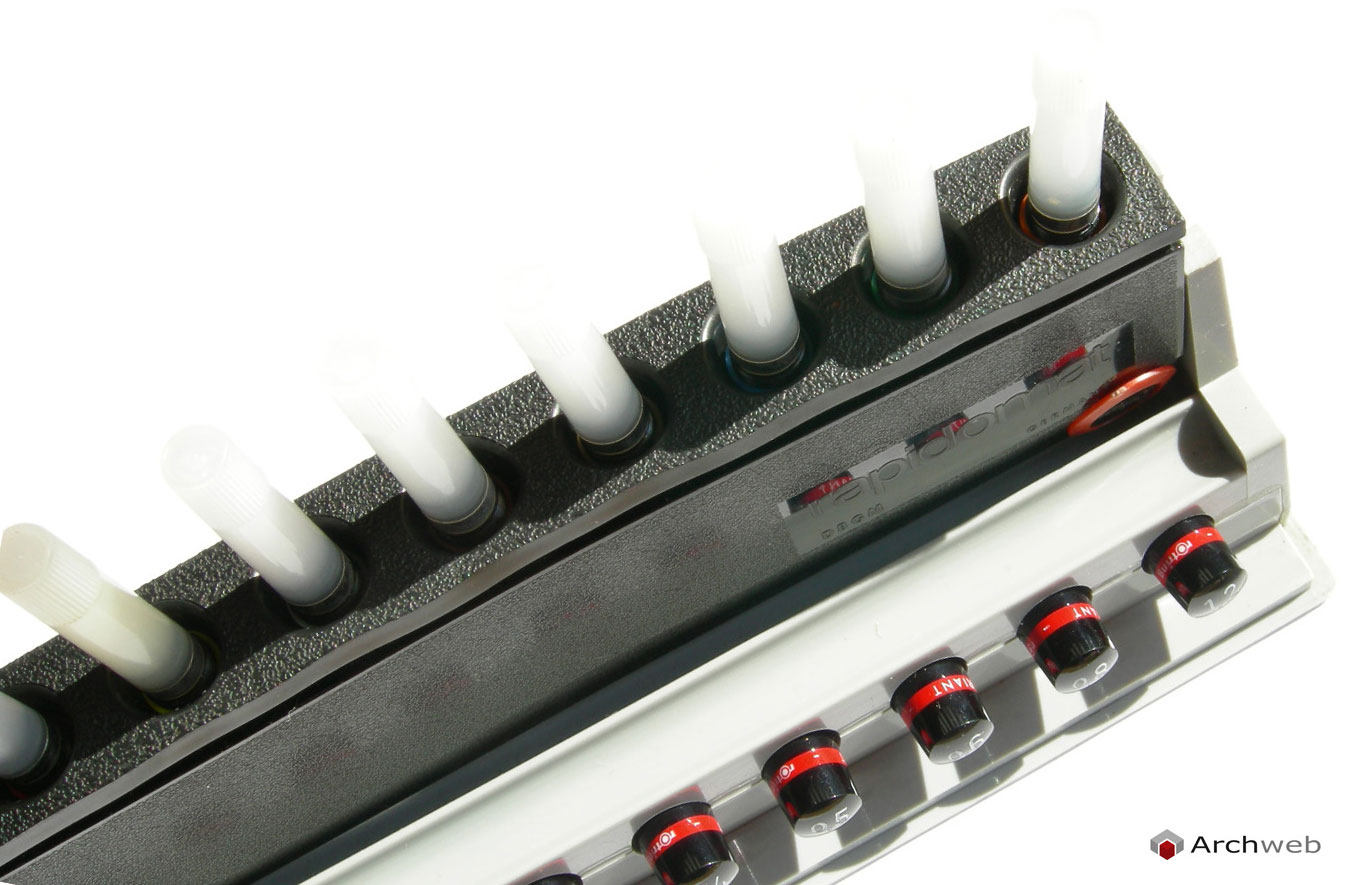
In the picture the Rotring nib holder. The nib was inserted in the appropriate housing inside which there was a damp sponge that prevented the ink from drying out. You had to remember to periodically moisten the sponge otherwise the nib would dry out and stop working. Rapidographs needed periodic cleaning, especially the thinner tips. To clean the nib (see instructions) the tip was unscrewed with a special red key and washed in hot water and liquid soap. In the case of particularly dry ink, the nib was left to soak for a few hours, rinsed and dried and returned to perfect working order.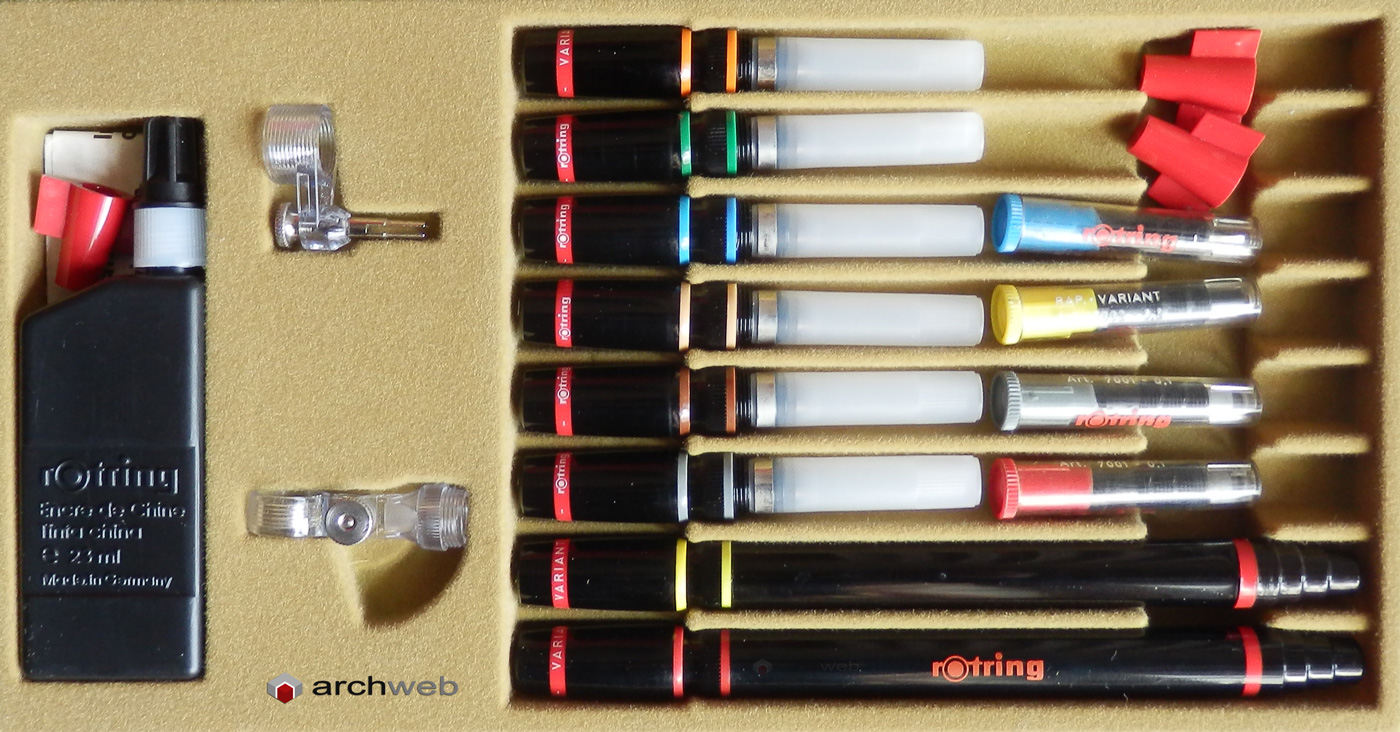
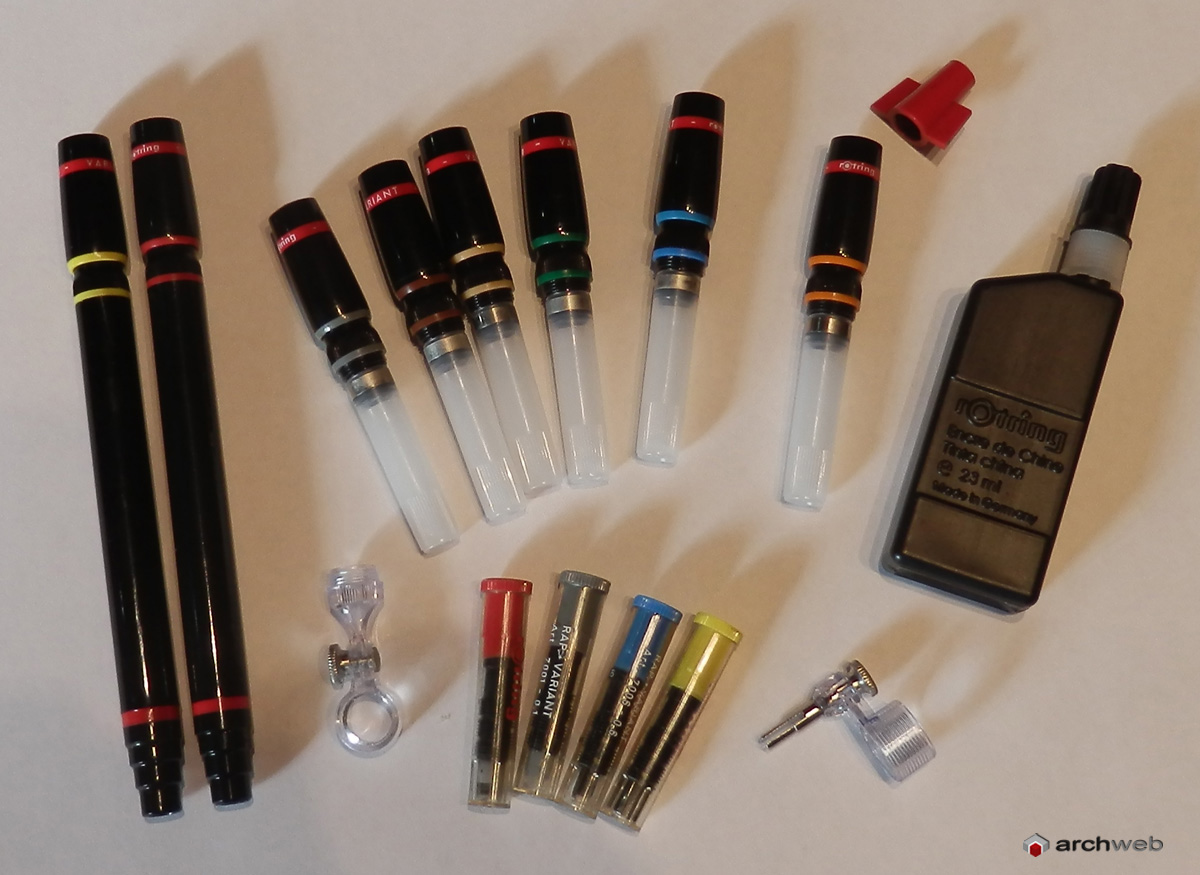
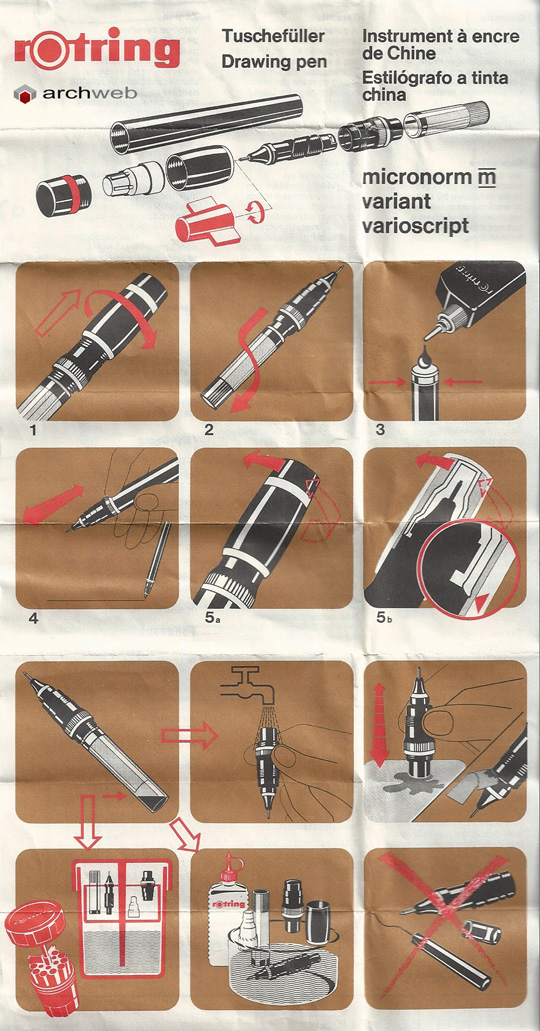
The complete set in addition to the ink also included the support to use the rapidograph with the compass.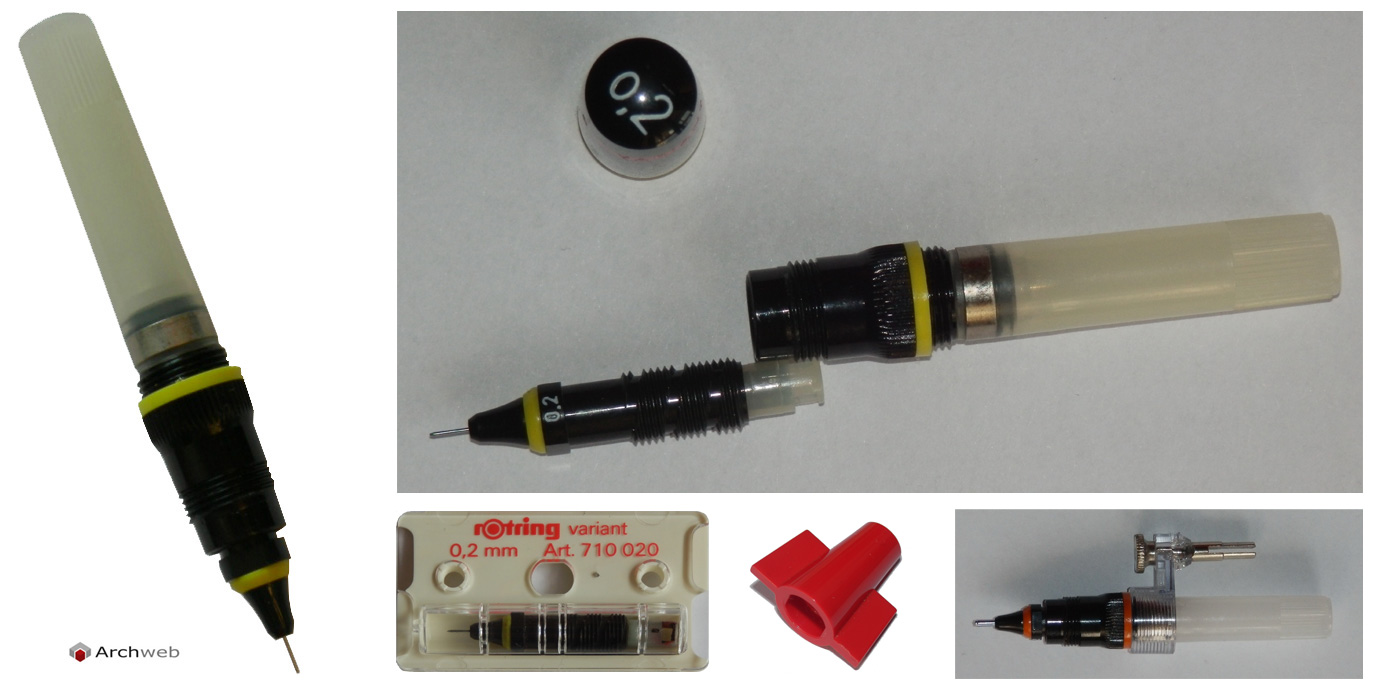

Anyone wishing to contribute to improve this page can contact us by sending an email to the editorial staff
































































